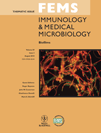The use of lytic bacteriophages in the prevention and eradication of biofilms of Proteus mirabilis and Escherichia coli
Editor: Roger Bayston
Abstract
Antibiotics have been the cornerstone of the clinical management of bacterial infections since their discovery in the early part of the last century. Eight decades later, their widespread, often indiscriminate use, has resulted in an overall reduction in their effectiveness, with reports of multidrug-resistant bacteria now commonplace. Increasing reliance on indwelling medical devices, which are inherently susceptible to biofilm-mediated infections, has contributed to unacceptably high rates of nosocomial infections, placing a strain on healthcare budgets. This study investigates the use of lytic bacteriophages in the treatment and prevention of biofilms of bacterial species commonly associated with infections of indwelling urological devices and catheter-associated urinary tract infections. The use of lytic bacteriophages against established biofilms of Proteus mirabilis and Escherichia coli is described, whereby biofilm populations have been reduced successfully by three to four log cycles (99.9–99.99% removal). The prevention of biofilm formation on Foley catheter biomaterials following impregnation of hydrogel-coated catheter sections with a lytic bacteriophage has also been investigated. This has revealed an approximate 90% reduction in both P. mirabilis and E. coli biofilm formation on bacteriophage-treated catheters when compared with untreated controls.




